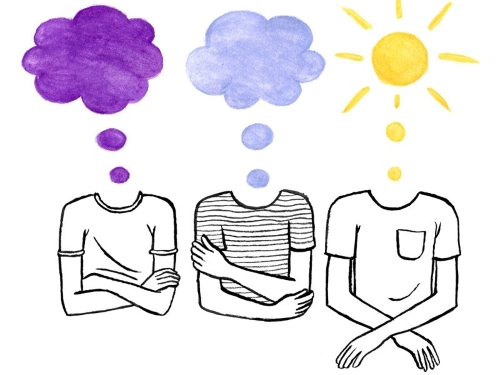The topic of mental health is one that has been more openly discussed in the media in recent years. While open dialogue around crucial issues is important to encourage, this increased exposure brings about new considerations and challenges, mainly about how we discuss mental health. Words have power, and the way fictional stories about mental health are told can have just as crucial of an impact on readers as facts presented in news outlets. Editors have the responsibility to put forth stories that promote a respectful and authentic perspective on mental health, and below are four practices they can implement to achieve this goal.
1. Create a house style guide about mental health language.
Editors and writers are given the opportunity to use language in such a way that encourages productive conversations about mental health. The Guardian’s style guide, which has a section specifically for mental health, lists words not to use, such as loony, maniac, nutter, etc. because they “stereotype and stigmatize.” The guide also advises moving away from language that paints the person as a victim, such as “suffering from” or “afflicted by.” Another example is the Buzzfeed style guide. They emphasize using “people-first” language (“a person with schizophrenia” vs. “a schizophrenic person”); understanding the difference between an emotion and a mental disorder (using “sad” vs. “depressed”); and they offer specific guidelines for articles that report on suicide, such as avoiding specification of the methods used and avoiding usage of the word “commit,” which can carry a criminal or negative moral connotation. If publishing houses employ a similar style guide, it encourages everyone to be on the same page about how to respectfully discuss issues and properly characterize a protagonist with a mental illness.
2. Hire Own Voices authors.
The term “Own Voices” was coined by YA author Corinne Duyvis, who hashtagged “#ownvoices” on Twitter in 2015. Own Voices authors are writers who share the same identity—race, ethnicity, gender, disability, etc.—as their protagonist. Lee & Low Books, an independent, minority-owned children’s book publisher, surveyed over thirteen thousand employees within thirty-five publishing companies and eight review journals in its first Diversity Baseline Survey in 2015. The data showed the publishing industry is overwhelmingly white, straight, and non-disabled, making it difficult for stories that aren’t mainstream by these standards to reach the collective consciousness of publishing companies. Adrianna Herrera, an Own Voices romance novelist, says, “That in and of itself is a problem, because it’s kind of the unwritten rule that queer stories don’t have a place in the general mainstream market or [sit] on the bookshelves next to the historicals.” As a queer person of color, she set out to write stories that reflected her own experience, and people who find themselves at a similar intersection of identity can relate to them. For an example of a publishing house that prioritizes Own Voices authors, check out Blue Crow Publishing.
3. Where Own Voices authors aren’t accessible, hire sensitivity readers.
Sensitivity readers serve as part fact-checker, part “cultural ambassador,” according to Slate journalist Katy Walman. Minority group members are hired by an author or a publishing house and are specifically tasked with identifying hurtful, inaccurate, or inappropriate depictions of that group. According to Marketwatch, 50.2 percent of Americans five years old or less are part of a minority ethnic group; they make up the first majority-minority generation in U.S. history. These statistics and the ever-growing presence of social media contribute to growing concerns for writers: an audience’s desire for more diverse representation that might be out of a given writer’s comfort zone or personal experience, and, if done incorrectly, can result in major bad press from the young, socially conscious online readers. Ooligan sought out sensitivity readers for a recent title, and the experience proved invaluable as a learning opportunity for those involved and for the editorial process overall.
4. Include helpline information at the end of relevant books.
Mind-wise Innovation, powered by a team of behavioral health professionals from Massachusetts who equip organizations to discuss mental health, detail the appropriate ways for media to tell the story of suicide, as well as offer tips. The first tip they share is to emphasize that suicide is preventable, and to include information on warning signs and how to talk to someone who may be at risk. They say, “Perhaps most importantly, include resources. This would include a number for a suicide hotline and maybe even local resources where someone could go to get help.” While these guidelines are suggested for traditional media outlets, they can also be effective in relevant books.
The meaning we attribute to words, the ways we view people unlike us, and the cultural norms we slip into as a collective society shape the way we perceive people and their circumstances. These are a few examples of many decisions editors and publishers can make that can help contribute to a healthier societal perception of mental illness.

